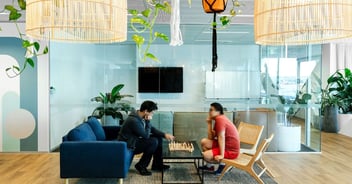Growth in Australia’s freight sector is estimated to outpace population growth over the next decade. In 2016, the domestic freight task grew by 50%, whilst the population grew by 18% over the same period.
The increased demand has had a remarkable effect on freight operators nationally. Freight Australia says, “to meet the unprecedented parcels demand, Australia Post established 16 new or recommissioned parcel processing facilities, has chartered additional freighter flights, is operating some of its processing facilities 24/7 and has created more than 600 new casual roles.”
With such major growth in headcount, facilities, and work volume, and corresponding investments in automation, robotics, and AI, there has been a rapid shift in the kinds of workers the industry seeks as well as the kind of work many are performing. In addition, with transport roles experiencing long journeys, long hours and a sedentary lifestyle, and warehouse workers working in an implicitly dangerous environment, there has been pressure on the industry to invest more in the health and wellbeing of its staff.
Workplace Strategy in Freight and Logistics
The freight and logistics industry needs workplaces that are fit for today’s purpose but will also continue to adapt as the industry advances. In order to continue to attract the kind of skilled labour these organisations now need, we’ve seen the big end of town leverage workplace strategy for competitive advantage.
This is because workplace strategy enables so much more than a good-looking office. It is a framework that helps organisations identify the ways a workplace can improve efficiency, productivity, wellbeing and culture. The right strategy delivers a workplace that can attract and retain talent via a productive, enjoyable and comfortable workplace experience – it can even help people deliver on broader business goals, such as innovation, or sustainability.
Let’s take a closer look at the ways in which this industry can leverage workplace strategy and design for business benefit.
Talent attraction and retention
The freight and logistics industry, like other sectors, has an aging workforce which is affecting the age profile of its employees. As these older workers leave the industry in the coming years, a challenge arises: matching younger workers to jobs traditionally done by a different type of employee.
Unfortunately, the F&L industry has long been tarred with the brush of an ‘undesirable‘ career. But, with dramatic change has come a change in this image – with logistics organisations now needing every type of talent: from truckies to techies, from automation engineers to warehouse workers – they’re in demand. But perhaps the newer breed employee that’s required by this evolving sector is the highly skilled digital operator.
These employees have come from different industries, and their needs and expectations are different from those who have grown up in freight; they require a modern, invested approach to culture, diversity, career development, equipment and environment.
The environment component, therefore, requires careful research and planning. This includes a strategy for physical space – the actual layout, work environments, work furniture and equipment, and fixtures. But it also includes policies and technologies. Any workplace that is lacking or dated on any one of these will find it difficult to nab a world-class digital operator from Atlassian.
Fulfil customer expectations
You already know, freight and logistics customers expect speed and agility in your service. Often new prospects and customers look for quality cues beyond the service you provide. A modern workplace kitted out with automation, robotics, activity-based work areas, with health and wellbeing centres, stocked kitchens, and HVAC ventilation will signal more about your commitment to your people’s care and efficiency than your company bio on LinkedIn or Facebook.
Whatever your business goal, workplace strategy can support it by defining the required facilities and layouts, specifying the appropriate equipment, and bringing it tangibly and visibly to life.
Is workplace strategy for your organisation?
Effective workplace design and strategy has many benefits. It can help your freight and logistics business to identify the best ways of working, support employees through change, attract and retain talent, and help people deliver to your commercial goals.
You can ground your workplace strategy by collating data and insights that first build the business case for your chosen path. Following this, your strategy, design and delivery will all be focused on delivering to those goals, and creating your future workplace of today, and tomorrow.
If you want a workplace strategy partner to help you achieve these business objectives, before your competitors down the street, find a strong, strategic workplace design partner.







